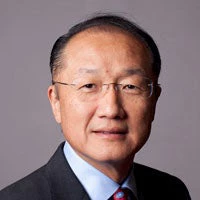I’m a big believer in setting highly ambitious targets in order to galvanize communities and countries to take action on serious issues. When I was at the World Health Organization in 2003, we set a target called “3 x 5” – committing to treat 3 million people with HIV/AIDS in the developing world by 2005.
At the time, just a few hundred thousand people in the developing world had access to the life-saving treatment. When we announced the target, the global health community was still arguing about whether HIV treatment in poor countries was possible. Some called it an impossible dream that would give people false hope.
I responded that no one ever said treating 3 million people would be easy. But we needed a measurable and time-limited target to change fundamentally the way we thought about the challenges of HIV in developing countries. The target helped change the way we worked – we had fewer arguments about if we should do it, and focused on how to get it done.
At WHO, we began publishing six-month updates on countries’ progress – or lack of it. The goal helped spur lots of action: In the first six months, 56 countries asked WHO for technical assistance to rapidly scale up HIV treatment and care, and 12 countries set targets to treat at least 50 percent of those who needed treatment by the end of 2005.
Still, progress seemed very slow in that first year – far slower than I expected. But it was clear that with the help of the US government (through its PEPFAR initiative), other major donors and affected countries (through the Global Fund to Fight AIDS, Tuberculosis, and Malaria), gradually, more and more people were being treated.
It also was clear early in 2005 that we wouldn’t meet our goal of enrolling 3 million people in treatment by year’s end. So what did we do?
I decided that the best approach was to acknowledge the obvious – we failed. Toward the end of 2005, I told reporters that we would not reach our goal and that I personally took responsibility. Reporters asked whether I had failed the millions of people, most of them in Africa, who desperately needed treatment in order to survive.
I admitted that was true. But I said it was also true that the World Health Organization had played a role in giving hope to many and had made it clear that help was on the way, that patients in poor countries deserved anti-AIDS drugs as much as anyone else in the world, and that global leaders needed to continue to push to meet our goal – even if we would reach it later than hoped.
The world eventually reached the mark of 3 million in treatment by 2007. It took roughly four years, instead of two and a half, to ramp up the coverage to pass our target. Nearly all thought “3 x 5” was impossible. In the end, they were right. But I’m happy that we set the target.
What was our alternative? Every minute, people were dying of AIDS because they didn’t have access to drugs – only because they were poor. Setting a hard target forced us to look for creative solutions to bring low-cost drugs to the poor, to set up cost-saving procurement systems, and to extend treatment from the cities to rural communities.
Since then, treatment has taken off. Today, more than 10 million people are being treated for AIDS.
So I have no regrets for failing. I gave it my best shot. I’ll keep pushing for the world to set concrete targets (such as ending extreme poverty by 2030, which the governors of the World Bank Group set last year as one of our goals). I believe setting targets can succeed (even when we fail to reach them) because it forces us to ask difficult but critically important questions. Is the target, no matter how daunting it may be, the right thing to do? If it is the right thing to do, are we as an organization fit for purpose to reach that goal? What do we need to do differently today to reach that goal?
At the World Bank Group, we are grateful that our governors, representing 188 countries, have given us a goal that has forced us to ask and begin answering these very questions.
Photo: Cliff James
This post first appeared in LinkedIn Influencers.




Join the Conversation